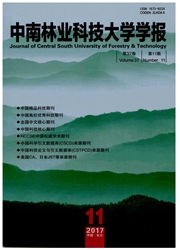

 中文摘要:
中文摘要:
为了为利用百日草 elegans 的杂种优势发现一条新小径并且加速繁殖,处理,一个不育系的花药开发的机制被探索。回交,同胞交配,有近交系的肥沃的植物和测交的 selfing 在这块地,和细胞学里被分析并且识别被观察。能够是一个维护者的后退的原子核不育系 AH209AB 被连续回交作为父本与男无菌的植物和肥沃的 F1 植物获得。Cytological 和解剖研究显示了那:(1 ) 正常花药的墙由象外皮,粉末房间墙,中间的水平和磁带弦音器房间那样的房间的四层组成。在在百日草 elegans 的花粉母细胞的成熟分裂的过程是 simultanously 划分的正常和细胞质。成熟花粉粒是 tricellular 类型。(2 ) 男无菌的植物的花瓣作为丝状的结构降级了,雄蕊在外观是绒毛状的,没有花粉被形成。结果证明男无菌的植物的花药不再继续在 sporogenous 房间的织物的形成以后区分孢子母细胞和花粉囊,在磁带弦音器房间,中层和 PMC 的内部墙之间没有明显的边界, tapetal 房间没从开始发展。流产类型因此是完全结构的雄性不育性。不育系属于 non-sporange 男无菌的类型并且具有在 F1 种子的大使用生产。
 英文摘要:
英文摘要:
In order to find out a new pathway for utilizing heterosis of Zinnia elegans and accelerate breeding process, the mechanism of anther development of a male sterile line was explored. Backcross, sibmating, selling of fertile plants and testcross with inbred lines were analyzed and identified in the field, and cytology was observed. Recessive nucleus male sterile line AH209AB capable of being a maintainer was obtained by successive backcrosses with male sterile plants and fertile F1 plants as male parents. Cytological and anatomical studies indicated that: (1) The wall of normal anther was constituted of four layers of cells such as epidermis, powder chamber wall, middle level and tapetum cells. The process in meiosis of pollen mother cell in Zinnia elegans was normal and cytoplasm divided simultanously. Mature pollen grain was tricellular type. (2) The petal of male sterile plant degraded as a thread-like structure, the stamens were villiform in appearance and no pollens were formed. The result showed that the anther of male sterile plant no longer proceed to differentiate spore mother cell and the pollen sac after the formation of the tissue of sporogenous cells, there was no evident boundary between tapetum cell, middle lamella and inner wall of PMC, tapetal cells did not develop from the very beginning. So the abortion type was completely structural male sterility. The male sterile line belongs to non-sporange male sterile type and is of great use in F1 seeds production.
 同期刊论文项目
同期刊论文项目
 同项目期刊论文
同项目期刊论文
 Analysis of combining ability of two-types of male sterile and four restorer lines of Zinnia elegans
Analysis of combining ability of two-types of male sterile and four restorer lines of Zinnia elegans 期刊信息
期刊信息
